
‘Afraid of the water’? Life in a city that dumps billions of litres of raw sewage into lakes and rivers
10 billion litres of sewage are dumped into Winnipeg’s lakes and rivers each year. Some...
Less than one kilometre from a Wet’suwet’en camp and village site, where cabins, tiny homes and a feast hall provide space for ceremony, cultural practices and opportunities to reconnect with the land, is a vast muddy clearing, guarded by private security workers.
Here, the path of the Coastal GasLink pipeline crosses Ts’elkay Kwe (Lamprey Creek), a tributary of Wedzin Kwa (Morice River). This work requires digging a trench right through the creek to bury the pipe under it.
Ts’elkay Kwe is a known spawning channel for steelhead trout and other species, including coho salmon, according to a 2007 land-use plan. But steelhead and salmon throughout the watershed are in decline, in part due to widespread clearcut logging and climate change.
“I always refer to it as home,” Gaylene Morris, a member of Likhsamasyu Clan, Misdze Yikh (Owl House), told The Narwhal in an interview. “A lot of people don’t understand what I mean by that but my grandfather raised us out there — everything we know and everything that we’ve ever been taught was out there.”
Late last week, Morris rushed out to the territory after hearing word about work being done at the crossing of Ts’elkay Kwe and suspicion that it included the use of explosives.
She said security blocked access to the worksite and threatened her with arrest, refusing to allow her to speak to Coastal GasLink construction personnel or provide any information about the work that was being done. She stood her ground and with the support of two other land defenders, started filming.
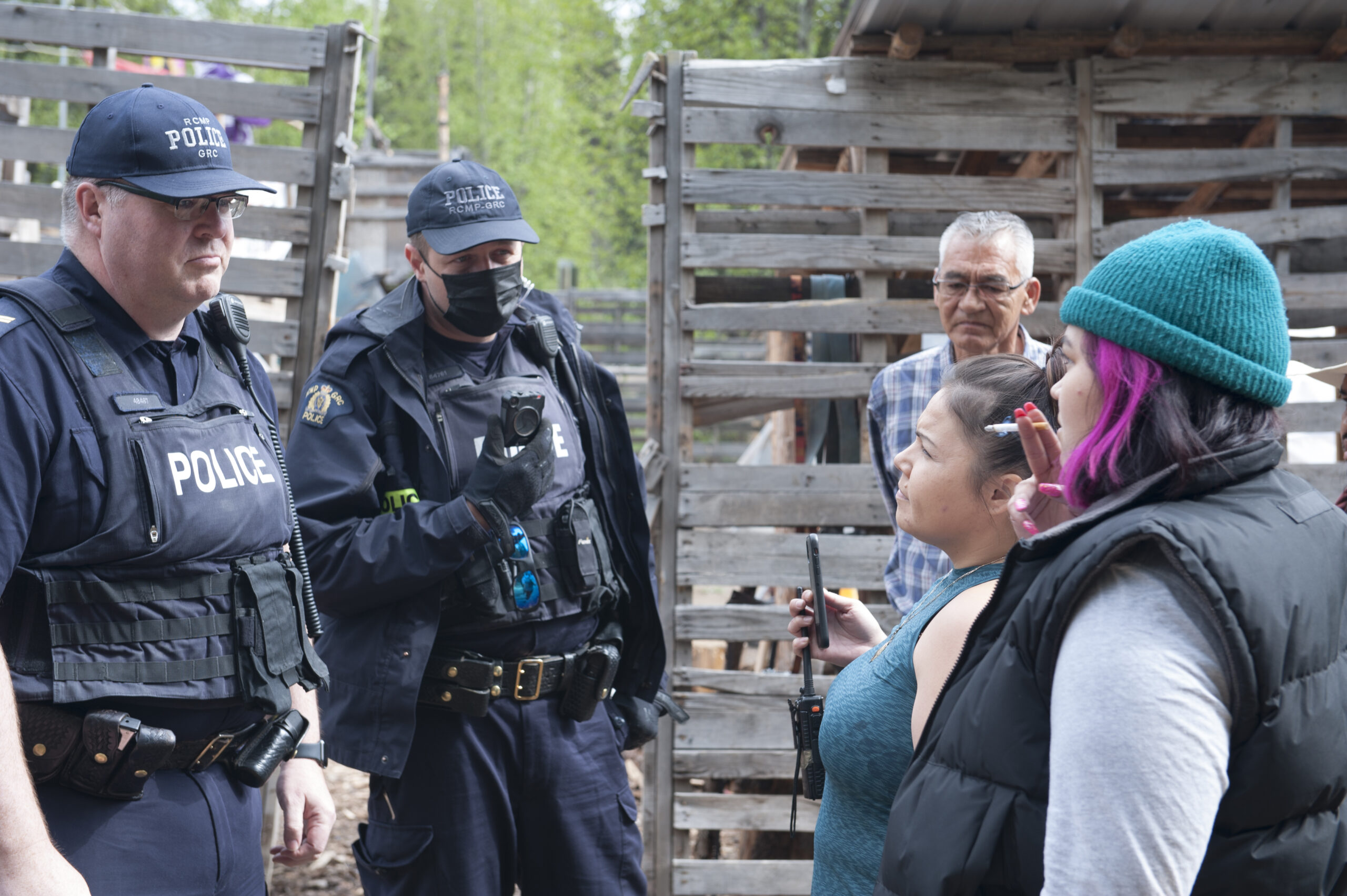
At first, she didn’t know what was going on and her demands for answers just garnered the same response, she said: you’re in contempt of the injunction and subject to arrest. The standoff — in wet, cold conditions — went on for hours, according to Morris. At one point, she was walking towards her car when she said she felt something under her feet.
“I was like what was that? I just seen all of this dust, I guess, in the air and it looked like it could have been clouds but it was actually dust and I said, ‘Are you guys fucking blasting while we’re here and you’re not even telling us?!’ And then all of the crew started laughing and everybody was like, ‘Oh, we did it already. Now you can go home.’ ”
In an online notification posted to the Coastal GasLink website late last year, the company noted blasting activities would not occur within one kilometre of a permanent residence. The Gidimt’en camp, or village site, has a registered civic address and includes a two-story cabin belonging to Dinï ze’ Woos, whose house territory is directly impacted by the project. It is about 800 metres from where the blasting occurred.
But the company never directly told those at Gidimt’en camp, according to Morris. Signs that said “danger blasting zone fall out” were hammered to trees in the woods behind the collection of cabins and wall tents. Those at the camp were not told any specific details about the timing of the blasting, Morris said.
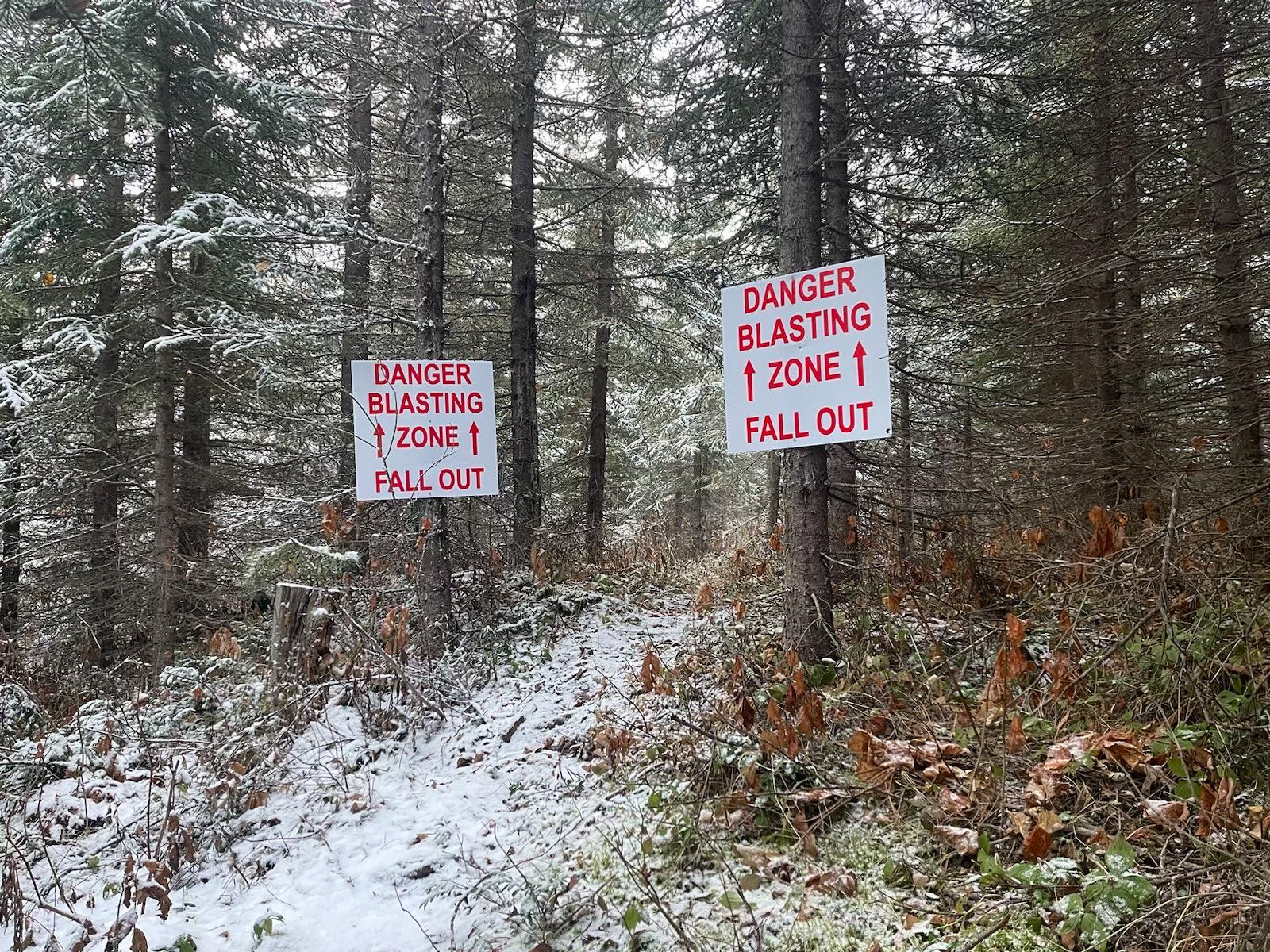
“When the blast actually happened, it was so surprising to me that I didn’t even know what to do,” Morris said. “It felt like a torpedo went under me, under the ground. It was just like a series of pops, and before you hear that popping I felt it just go flying right under me.”
She said she got tobacco and held it as she helplessly watched the events unfold.
“For me, it was more of like feeling like I…” she trailed off, finding it hard to find the words. “I don’t know how to explain it, like I’ve let my role as a caretaker of the land down, because I know in this realm my grandfather’s not here, but it’s almost like a feeling of defeat, like the things that you’ve taught me, I haven’t been able to do.”
She said she held the tobacco and asked the ancestors to help her stay strong.
“I take things very hard at times and so it was a really hard place to be and then when the blast had happened, it was a lot of anxiety — like a lot of anxiety. I couldn’t stop these people. It didn’t matter what I did. I felt like I had done my own little part for the two hours of holding them off but that physical part in my body, I could feel the anxiety and I felt sick.”
“Lamprey is completely gone.”
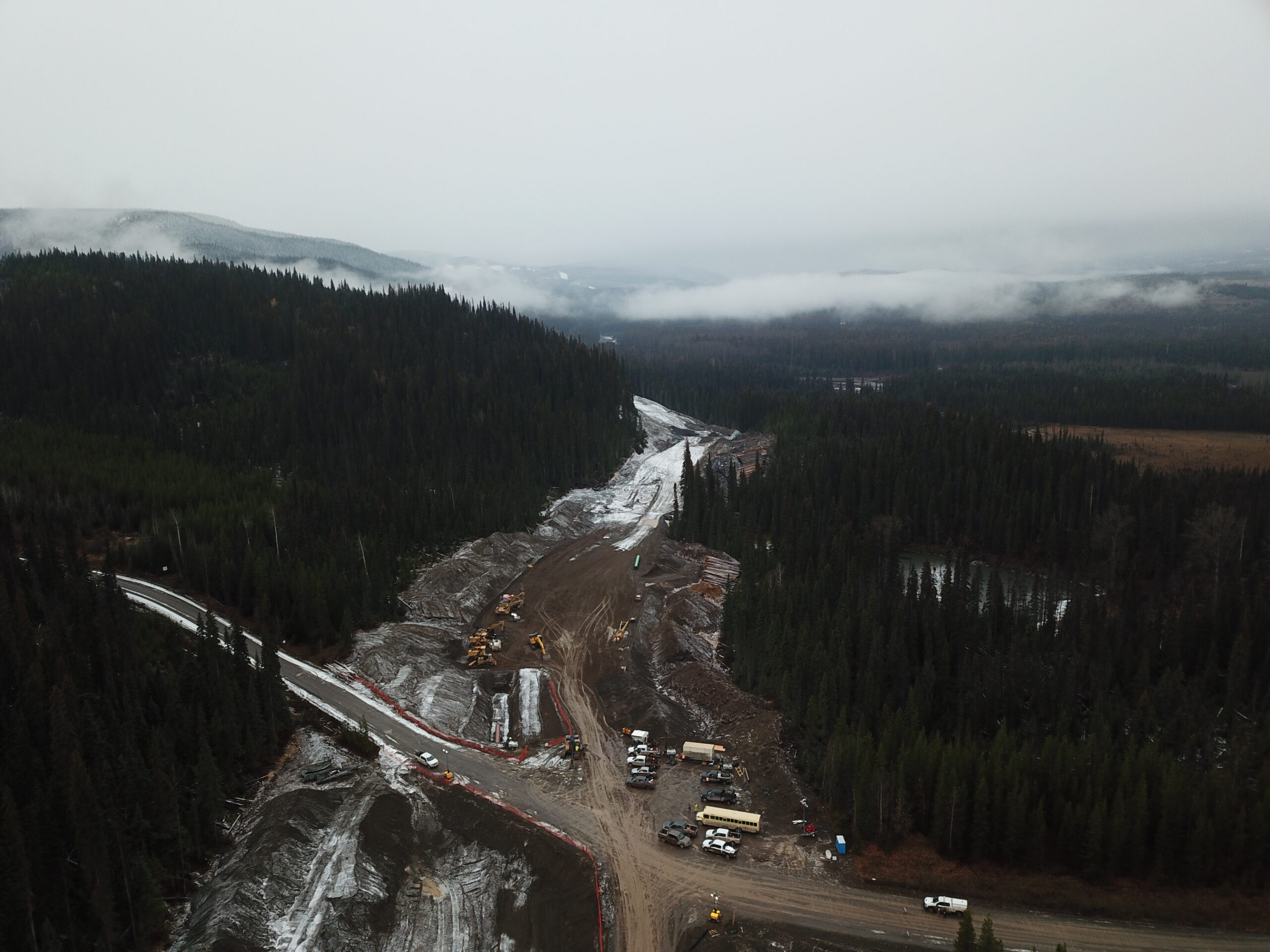
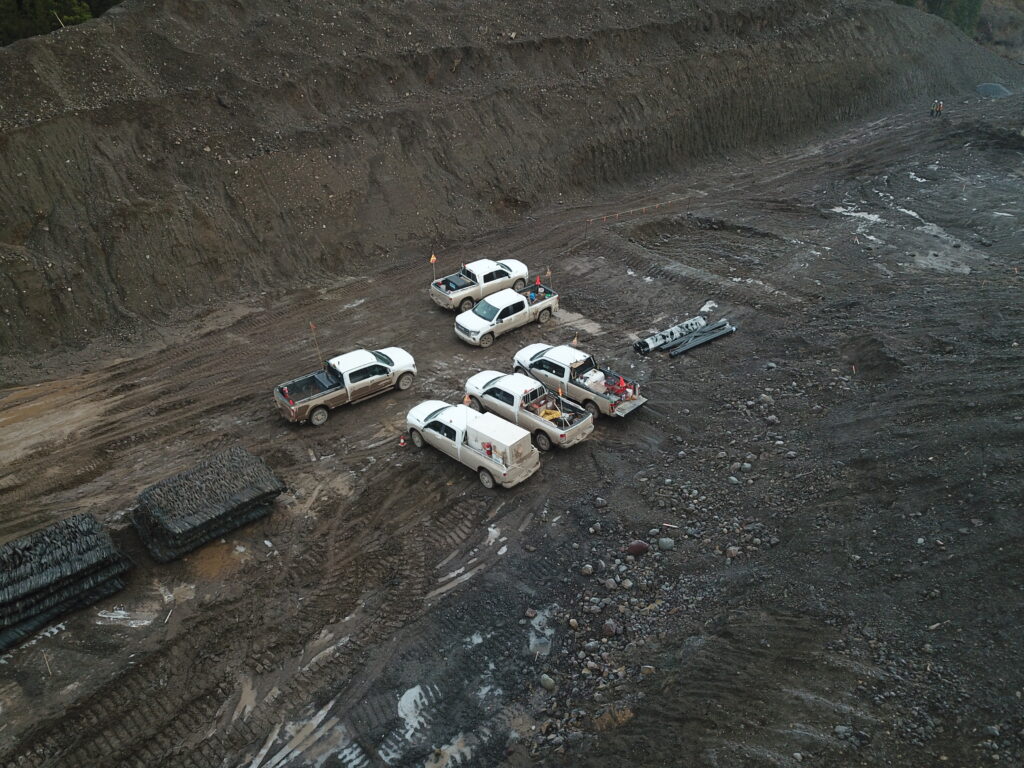
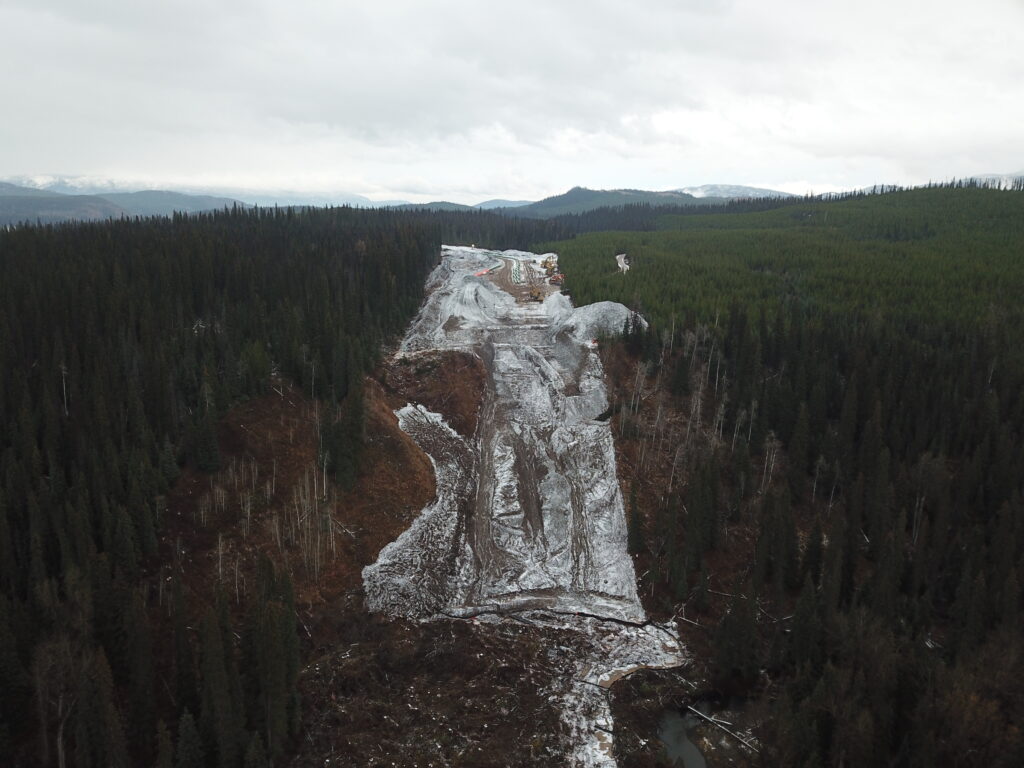
TC Energy told The Narwhal about blasting activities in an emailed statement sent a few days before Morris was blocked access to the territory. Following publication it said Morris’ claims that Lamprey is completely gone are “simply false.”
“In fact, the creek remains flowing, and blasting was not done in the creek,” the updated statement said. “Controlled blasting activities by Lamprey Creek are part of ongoing clearing and grading activities around the creek … Furthermore, mitigation measures are in place to protect the creek during construction and in accordance with regulatory requirements.”
“Neighbouring communities were previously notified of these activities as part of our general blasting notification. As you noticed, local notification was also provided around the work area in advance of activities,” TC Energy told the Narwhal.
The $11.2 billion pipeline, owned by Calgary-based TC Energy, is being built to connect fracked gas sources in B.C.’s northeast to the LNG Canada liquefaction and export facility currently under construction in Kitimat. Rising tensions are fuelled by distrust and a lack of answers about what is being done to ensure species like steelhead and salmon aren’t negatively impacted. An increase in police surveillance and industry security also has people on edge.
The pipeline project, which cuts a swath through the heart of the 22,000-square-kilometre territory, did not receive Free, Prior and Informed Consent from the Wet’suwet’en Hereditary Chiefs. Instead, TC Energy and the provincial government signed benefit agreements with five of six band councils, as well as 15 other First Nations governments along the pipeline route.
As The Narwhal recently reported, Coastal GasLink is pushing its pipeline under the river at the riskiest time for salmon. Chinook and sockeye, both declining populations, are wrapping up their annual spawning and their fertilized eggs now line the gravelly riverbed, including at and downstream of the site where the pipeline is crossing the river. The company is also working directly in many of the river’s tributaries and drawing water from the river, creeks and lakes to conduct its work.
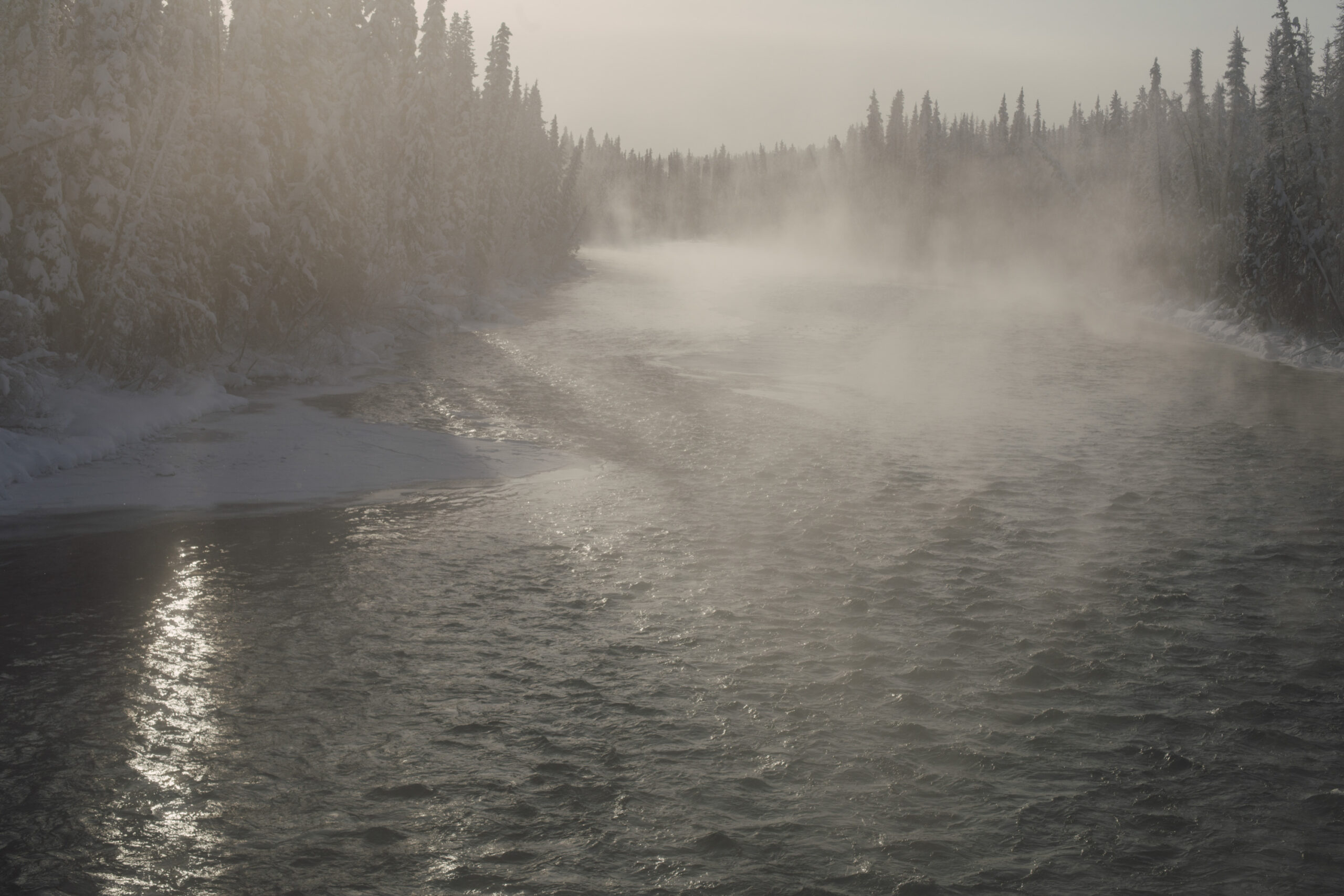
The project has a lengthy track record of environmental infractions that goes back to the beginning of construction. Inspectors with B.C.’s Ministry of Environment and Climate Change Strategy flagged numerous violations including attracting wildlife by leaving garbage out at workcamps, improper signage at sensitive ecosystems, logging an endangered tree species without collecting its seeds, not following prescribed mitigation plans and more.
B.C.’s environmental assessment office told The Narwhal the project is unique because it includes more than 700 waterway crossings and noted it has escalated enforcement and expanded inspections in response to “continued issues of non-compliance.”
“We have done multiple inspections this year along the entire length of the pipeline, by both helicopter and ground, and found ongoing concerns — in particular with erosion and sediment control that could impact sensitive fish habitat,” a spokesperson wrote in an emailed statement.
“As part of our escalating enforcement action, we entered into a compliance agreement with [Coastal GasLink] in July that requires the company to take more stringent measures to protect waterways from erosion and sediment in all areas of new construction.”
However, that compliance agreement excludes any areas where the company had already broken ground — more than half of the 670-kilometre long footprint. For example, the agreement does not cover the work to drill and lay pipe under Wedzin Kwa. Nor does it cover the in-stream crossing of Ts’elkay Kwe.
“Newly opened and exposed ground have the greatest risk for erosion and sediment control concerns,” the spokesperson said when asked in one of several follow-up emails why significant sections like the river crossing are excluded. “The remainder of the project is still subject to the environmental management plan required by the environmental assessment certificate, including erosion and sediment control mitigation measures.”
Under the terms of the agreement, the environmental assessment office issued an order to “cease construction activities in any area covered by the agreement that is not following the work execution plan [the environmental assessment office] has approved for that area.” The Tyee reported earlier this week that work has since resumed.
The environmental assessment office explained it uses a risk matrix to determine what action to take, ranging from warnings, stop-work orders and fines to asking the environment minister to amend, suspend or cancel a project’s environmental assessment certificate. The minister can also step in at any time.
The company has received multiple warnings, orders and over $240,000 in fines to date.
TC Energy maintains its crossing under Wedzin Kwa, which spans 800 metres at a depth of 11 metres under the riverbed, is safe.
“At Coastal GasLink, we are committed to achieving the highest standards of environmental protection during construction and for the life of the project,” the company said in an email. “We recognize that how we work close to water bodies matters to Indigenous and local communities, and it matters to us too.”
But the company did not directly answer The Narwhal’s questions about mitigation and monitoring related to salmon eggs and spawners and declined interview requests to speak with its contracted biologists. It also did not answer questions about the expertise of its employees or subcontractors overseeing the crossing itself and declined a request to tour the drill site.
“Due to active work, media visits to the site cannot be facilitated at this time,” the spokesperson wrote.
“Coastal GasLink follows the requirements and regulations of our regulators, the B.C. Environmental Assessment Office and the Oil and Gas Commission. Please contact the appropriate authority for questions about permit requirements or compliance or for further information. Our work is fully authorized and permitted and has the unprecedented support of local and Indigenous communities across the project route. It is being completed in accordance with all permits, plans and requirements.”
Of the many permits issued through the B.C. Oil and Gas Commission, several are related to “changes in and about a stream,” including one that mentions “gravel removal” and the Wedzin Kwa crossing. The Narwhal asked Coastal GasLink for copies of permits prior to publication and the company said to ask the regulator. The regulator said permits are publicly available but told The Narwhal requests for further documentation about in-stream work have to be accessed through freedom of information legislation. (The Narwhal filed the requests but did not receive any further information prior to publication).
Following publication a spokesperson from TC Energy said “the permit referenced in the article does not authorize the removal of gravel. There are no permitted in-stream works and none are occurring.”
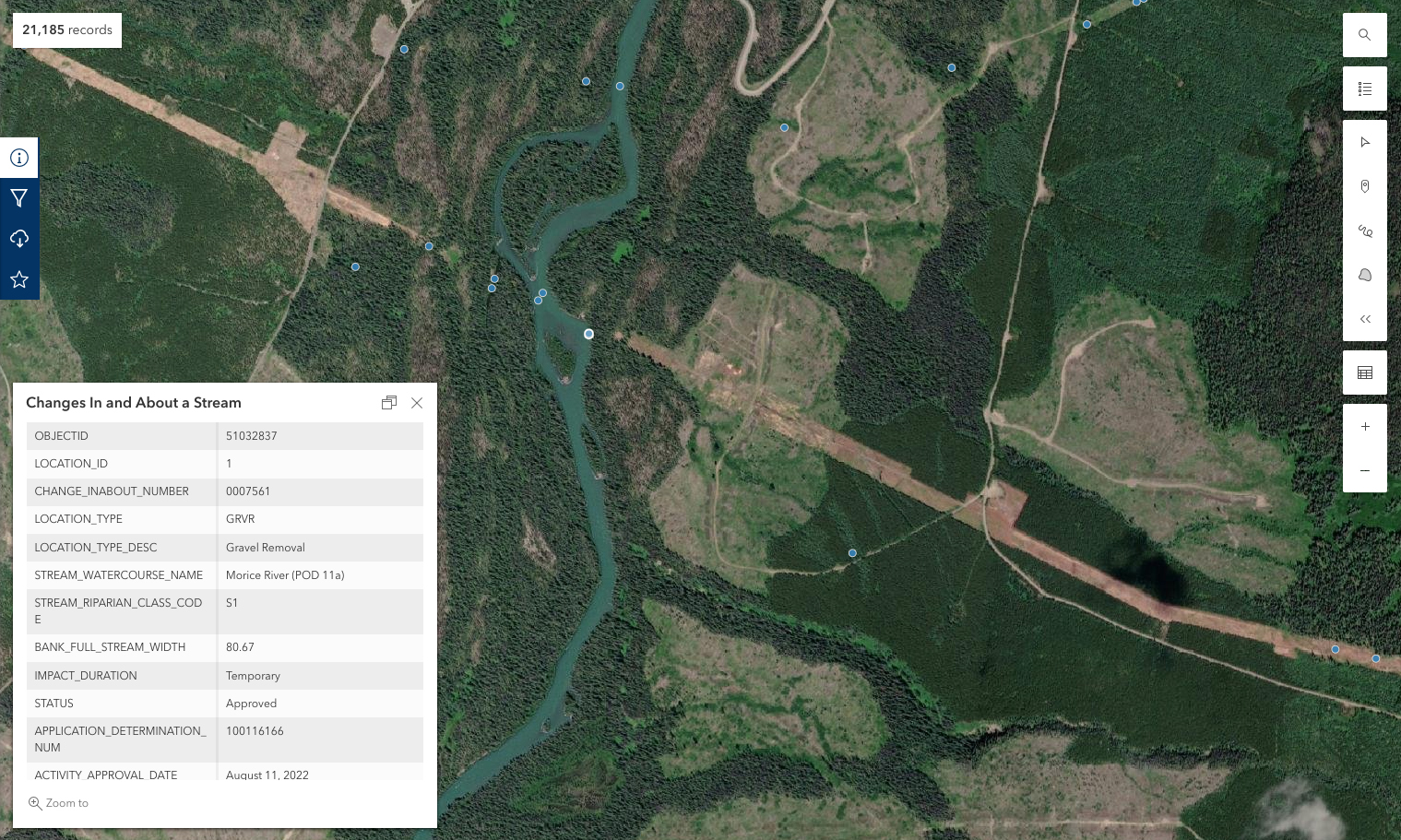
As for the crossing itself, micro-tunnelling, a method of trenchless crossing, does come with its risks, according to Coastal GasLink’s environmental management plan submitted to the environmental assessment office. Apart from the vibration, which can impact salmon eggs, there is also risk of a “frac-out,” or hydraulic fracture, where small cracks release the muddy liquid used to facilitate the drilling process. As the plan notes, “the loss of drilling mud into seams of coarse material, fissures, etc. routinely occurs during drilling operations.” While the liquid itself isn’t a problem in terms of chemical composition, in an aquatic environment it can “adversely affect fish and fish habitat,” according to the management plan.
The Narwhal requested an interview with qualified professionals about the technical and engineering aspects of the crossing but TC Energy said it was “unable to provide someone for an interview,” and referred instead to its website.
“We selected micro-tunneling as the safest and most effective crossing method with the input of subject matter experts, Indigenous communities and extensive environment and technical assessments,” the company said, adding it has completed nine of 10 major water crossings and the work under Wedzin Kwa is well underway.
The environmental assessment office agreed with the company’s assurance of safety.
“Using the best available science and information, the environmental assessment office did assess the potential for effects from drilling under the river. It was determined that there would be no significant impacts to salmon spawning.”
It added its compliance officers will continue to conduct “spot inspections along the entire length of the pipeline route on an ongoing basis to ensure compliance with the agreement and with the requirements of the environmental assessment certificate.” Those inspections will include the drill site.
Michael Price, a fisheries biologist working with the Office of the Wet’suwet’en on a federally supported sockeye rebuilding plan, said concerns about the pipeline’s impacts to salmon need to be looked at with a view that includes everything that has changed the land and water over decades.
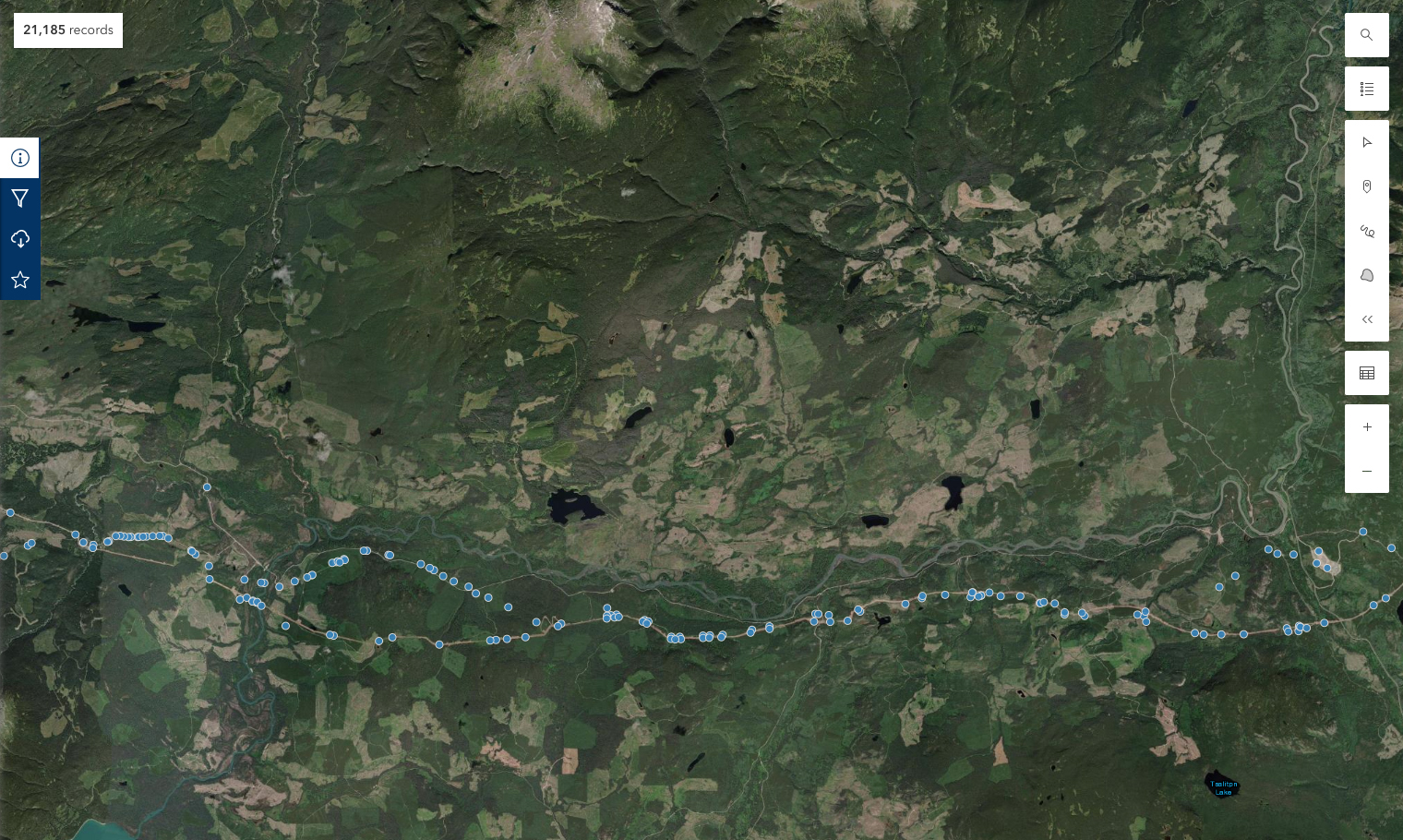
“For salmon populations and species throughout the coast, it’s never one thing — it hasn’t been one action that led to the diminished state of wild salmon populations across British Columbia,” he told The Narwhal in an interview. “It’s always the collective action. It’s ‘death by 1,000 cuts.’ I know it’s a corny term, but it’s so true.”
While pockets of intact forest remain, the entire watershed is deeply impacted by a long history of logging and other development, such as clearing land for farming and ranching.
At the river level, Price said the company might be meeting the requirements of B.C.’s environmental conditions, but that doesn’t mean there won’t be impacts to the ecosystem and the species relying on it.
“They provide a buffer of trees right adjacent to the river,” he said, adding that it’s not enough, considering there is an extensive areaupslope of that where the trees have been removed. During heavy rains, he said, sediment from those logged areas will go “undoubtedly into the river.”
For Morris, the feeling of seeing her home violently and irrevocably altered is overwhelming.
“I just … I don’t know, I just was devastated by it. I cried a lot.”
Updated Nov. 4, 3:14 p.m. PT: This story has been updated to clarify that TC Energy blasted beside Ts’elkay Kwe (Lamprey Creek) and not in the creek. It has also been updated to include the company’s response to Gaylene Morris’ statement that Lamprey Creek is “completely gone.” Following publication, TC Energy said Morris’ statement is “simply false” and “the creek remains flowing, and blasting was not done in the creek.” In addition, the story has been updated to clarify that the permit that mentions “gravel removal” and the Wedzin Kwa crossing “does not authorize the removal of gravel,” according to TC Energy.
Get the inside scoop on The Narwhal’s environment and climate reporting by signing up for our free newsletter. On a warm September evening nearly 15...
Continue reading
10 billion litres of sewage are dumped into Winnipeg’s lakes and rivers each year. Some...

Court sides with Xatśūll First Nation, temporarily halting Mount Polley mine waste expansion

Break out the champagne: Emma’s storied life and leadership in journalism has earned her the...
